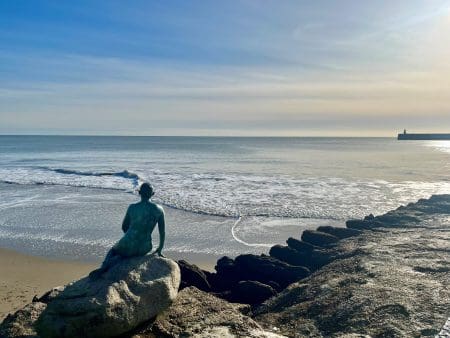THE STORIES BEHIND THE STATUES
Take a look into these statues and sculptures and the locations that help bring them to life.
How many times do you think you’ve walked past a statue? Once? Twice? Countless, surely.
But how often do you think you’ve stopped and thought “who actually are you?”.
We’ve often pondered the same which is why we decided to spend some time delving into these sculptures and see what stories they have to tell.
Often, it’s a recreation of a character from history’s past, but sometimes they stand as reminder of how their impact through time has affected the town we live and breathe today.
Hythe diggers, Royal Military Canal in Hythe
Not all heroes wear capes – some don a flat cap and come equipped with a shovel or pickaxe.
This is the case for the bronze statues beside the bridge that crosses over the Royal Military Canal.
These figures depict two 19th century ‘navvies’ who built the canal area we all enjoy today.
The canal was originally intended to be a Napoleonic defence and now centuries later is an award-winning haven for wildlife, tourist favourite and recipient of the Green Flag award every year since 2010.
Thanks to these hardworking individuals many years ago, generations of visitors have been enjoying this stretch of canal bank and soaking up this marvel rich in both history and wildlife.
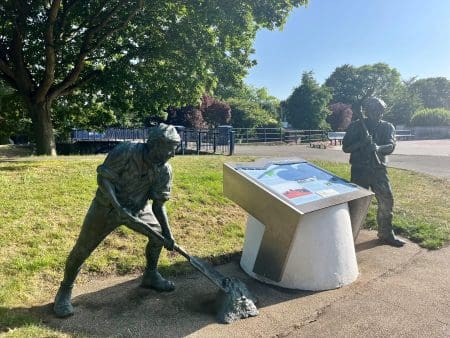
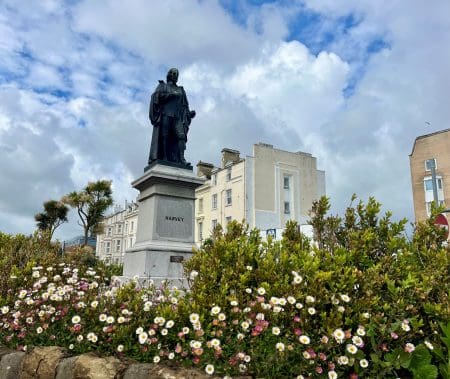
Sir William Harvey, The Leas in Folkestone
For locals this man needs no introduction as the nearby hospital also bears his name. Sir William Harvey was a world-famous physician during the 17th century and whose work researching the circulatory system provided a pivotal understanding into how the human body works.
His statue stands facing the sea across The Leas in Folkestone enjoying both a beautiful view and the live shows and musical performances at The Leas Cliff Hall and Leas Bandstand.
Interested in getting front row seats for the next show? Visit the Leas Cliff Hall’s website to view upcoming shows and performances.
Sir Jeffery Hudson, Kingsnorth Gardens in Folkestone
Short in stature, sure, but no less small in the tall tale he’s got to tell.
Living a challenging but colourful life given his height, Sir Jeff spent much of his time during the 1600s enduring japes at royal court and a bout of sword duelling and later lasting an unknown amount of time bound in slavery.
His story is so impactful, it may have gone on to influence the works of George R. R. Martin and his creation of the medieval-inspired fantasy series, ‘A Song of Ice and Fire’.
Sir Jeffery’s links to Folkestone are unclear, however his statue – which was found in a council-purchased garden in 1923 and later placed in Kingsnorth Gardens in 1928 – has been there (with a few breaks) at the gardens ever since.
As he continues to keep watch over the idyllic space and passers-by, why not give him a nod on your next visit through?
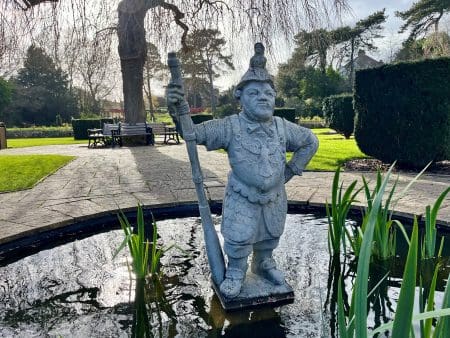
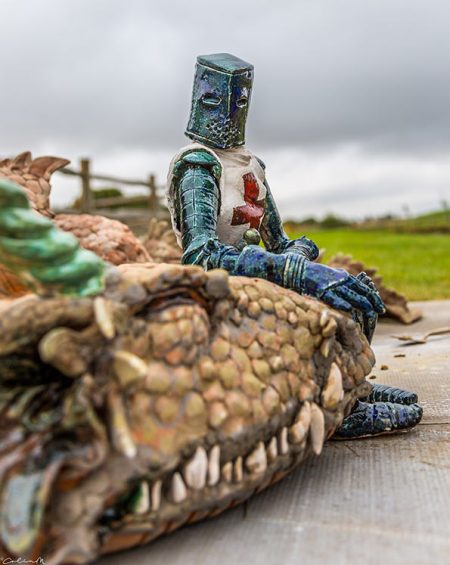
The Sculpture and Heritage Park, New Romney
Ever fancied meeting historic figures such as world-renowned composers Mozart and Beethoven? How about St George and the Dragon, Queen Zenobia, William Shakespeare, Albert Eistein, or even Mahatma Gandhi?
That’s who you can expect to see at the Sculpture Park based at the Hope All Saints historic church site on the Romney Marsh.
The park is inspired by those who have played pivotal parts in our forward developments in the arts, science, philosophy, medicine, agriculture, and culture – no matter of their race, religion or nationality.
You can find out more on the IMOS Foundation project who run the space here.
While you’re down visiting New Romney, why not take a stroll through to view some stunning contemporary murals, statues and art. Many depict scenes of local history and agriculture and can be seen scattered across town.
Get inspired for your next visit to this the little town with a big history in our town guide here.
Cornelia Parker’s Folkestone Mermaid, Sunny Sands
Inspired by the pose of Denmark’s Copenhagen ‘Little Mermaid’, this life-size sculpture hints less at the famous fantastical tale, but more about celebrating the local and the everyday.
She’s a welcome sight to all those who visit the Folkestone beach, watching over the locals and visitors who enjoy a dip in the sea, bathe on the sand, tackling the waves on board or just taking a canine companion for a runaround during the off season.
Cornelia Parker’s piece which was welcomed in 2011 is part of the now world-famous Folkestone Triennial, which this year returns over the summer with some new features in one of the UK’s leading exhibitions of contemporary art in public spaces.
Details about the 2025 collection can be found on Creative Folkestone’s website.
